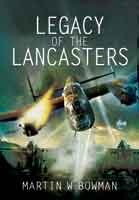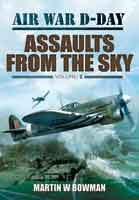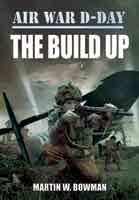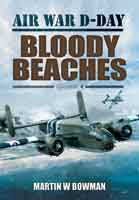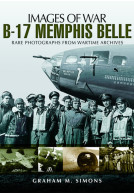Air War D-Day: Winged Pegasus and The Rangers (Hardback)
Imprint: Pen & Sword Aviation
Series: Air War D-Day
Pages: 138
ISBN: 9781781591185
Published: 5th June 2013
(click here for international delivery rates)
Order within the next 5 hours, 17 minutes to get your order processed the next working day!
Need a currency converter? Check XE.com for live rates
| Other formats available - Buy the Hardback and get the eBook for free! | Price |
|---|---|
| Air War D-Day: Winged Pegasus… ePub (3.6 MB) Add to Basket | £6.99 |
This is the third release in a series that attempts to detail each aspect of air and paratroop operations on the night of 5/6 June 1944. The 6th Airborne Division was to support British Second Army and First Canadian Army; it's task was to seize and hold the left flank of the bridgehead. The 5th Parachute Brigade was to seize the ground each side of the bridges over the Canal du Caen and the Orne River, whilst on the same day seize and hold positions on the long wooded ridge beyond the waterways, running from Troarn in the south to the sea. This ridge with the bridges behind would eventually form the critical left flank of the army and the bridges had to be intact to permit Allied troops and supplies to pass easily to and fro. The 3rd Parachute Brigade, which included the 1st Canadian Parachute Battalion (1,800 men) was to prevent enemy reinforcements moving towards the British beachhead. Another Battalion and the 1st Canadian Brigade had to destroy five bridges in the flooded valley of the Dives. The 9th Battalion had to silence a battery of four concrete gun emplacements on high ground near the village of Merville, 3 miles east of Ouistreham. For these tasks 38 and 46 Groups RAF dispatched 264 aircraft and 98 glider combinations, the glider tugs being Albemarles, Dakotas, Halifaxes and Stirlings, the gliders mainly Horsas with a few Hamilcars (carrying light tanks and 17-pounder anti-tank guns). Meanwhile, Brigadier Lord Lovat's 1st Special Service Brigade, composed of four Army and one Royal Marines Commando, reached Pegasus Bridge en route to help other units of the Airborne Division.
Allied intelligence had pinpointed 73 fixed coastal gun batteries that could menace the invasion. At Pointe-du-Hoc, a cliff rising 100 feet high from a very rocky beach, a six-gun battery which potentially could engage ships at sea and fire directly onto 'Utah' and 'Omaha' was taken by three companies (225 men) of the US 2nd Ranger Battalion using rocket propelled grapple hooks attached to climbing ropes and portable extension ladders to scale the cliffs within ten minutes after landing and capture the position.
This dynamic episode in the history of D-Day is expertly researched and relayed with both style and reverence for the aircrew who participated in proceedings. Two plate sections of black and white images supplement the text, working further to create a real sense of the times at hand at this most pivotal point in the history of D-Day.
...this most certainly is a great book to have added to my Normandy collection!
FSAddon, Francois A. 'The Navman' Dumas
Read the complete review here.
A part of the Air War D-Day series, primarily focusing on the activities of the 6th Airborne Division on D-Day. The book is divided into four chapters; the capture of the Pegasus and Horsa Bridges and their defence by the 5th Parachute Brigade; the seaborne landing of the 1st Special Service Brigade and their advance to the bridges; the attack on the Merville Battery by the 9th Parachute Battalion; and an entirely different subject, the capture of Pointe du Hoc by the 2nd Ranger Battalion. There are no shortage of books which describe these famous actions, but what sets this one apart is that it is almost exclusively told in the words of those who were there. Their numerous stories span a very broad range of perspectives and provide a colourful and extremely detailed account of these remarkable operations.
Pegasus Archive, Mark Hickman
About Martin W Bowman
With well over 100 published books, MARTIN W. BOWMAN is one of Britain’s best-known aviation historians and authors. Specialising in Second World War history and post-war aviation, Martin’s interest in these subjects was driven by the prolific number of RAF and USAAF air bases that were established in his native East Anglia. His previous books have included works such as Legend of the Lancaster, Confounding the Reich, Duxford and the Big Wings, as well as numerous titles in the exhaustive Air War series, which, between them, provide extensive coverage of operations carried out on D-Day and during the Market Garden offensive at Arnhem.












